Telegraph Stamps of the Commonwealth of Australia and its States
Incorporating Telephone Stamps of Australia
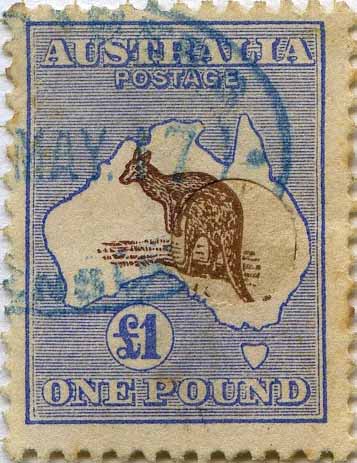
By
Dave Elsmore
-----------------
This page is a work in progress. If you can add to it please mail Dave
---
Contents:
New South Wales:
1871 Electric Telegraph Stamps
1885 Postage Stamps Issued to Superintendent of Telegraphs
1894 Stamped Telegram Forms
Queensland:
1880 Postal Note & Telegram
1882 Stamped Electric Telegraph Form
Victoria:
1873 Stamped Telegraph Form
Postage Stamps Cancelled Telegraph Office
Telephone Bureau Stamp
Western Australia:
1879 Embossed Stamped Electric Telegraph Form
South Australia:
Nil Telegraph
Telephone Stamp
Tasmania:
Nil Telegraph
Australia:
Telegraph Punctures of the uniform Australian adhesive stamps [Kangaroo & Map]
Telephone Stamps of Australia
Unknown
Other Issues Officially Punched
Previous Background Articles
Further Reading
Contributors
Links
-----------------
New South Wales
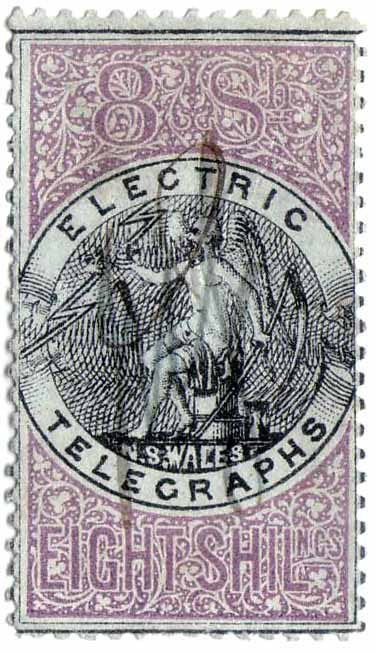
1871 Electric Telegraph. Wmk NSW Type I Blue Paper perf 12½,13. On issue for only 1 month, used copies are exceedingly rare
1d, 2d, 6d, 1/-, 2/-, 4/-, 6/-, 8/-.
100 'sets' of Specimen overprints
| Issued 1 Feb 1871 | 1d | 2d | 6d | 1/- | 2/- | 4/- | 6/- | 8/- |
| Printed 1-31 Dec 1870 | 10,000 | 21,500 | 1,250 | 5,000 | 5,000 | 3,800 | 2,000 | 1,450 |
| Printed 1-28 Feb 1871 | 15,000 | 3,500 | 2,250 | 15,000 | 10,000 | 3,700 | 500 | 1,050 |
| Issued 1-31 Jan 1871 | 8,750 | 5,000 | 1,000 | 4,500 | 4,500 | 3,500 | 1,000 | 1,000 |
| Issued 1-28 Feb 1871 | 8,000 | 8,000 | 2,000 | 5,000 | 3,000 | 1,000 | --- | --- |
| Specimens | 100 | 100 | 100 | 100 | 100 | 100 | 100 | 100 |
| Destroyed 1872 | 300 | 2000 | 150 | 100 | 350 | 150 | 1,350 | 250 |
| Destroyed 12 Feb 1878 | 7,750 | 9,800 | 150 | 10,200 | 6,950 | 2,650 | --- | 1,050 |
| Retained for Records | 100 | 100 | 100 | 100 | 100 | 100 | 100 | 100 |
| Total Issued | 16,750 | 13,000 | 3,000 | 9,500 | 7,500 | 4,500 | 1000 | 1000 |
Records Source: NSW Archives Ref 1/83-89
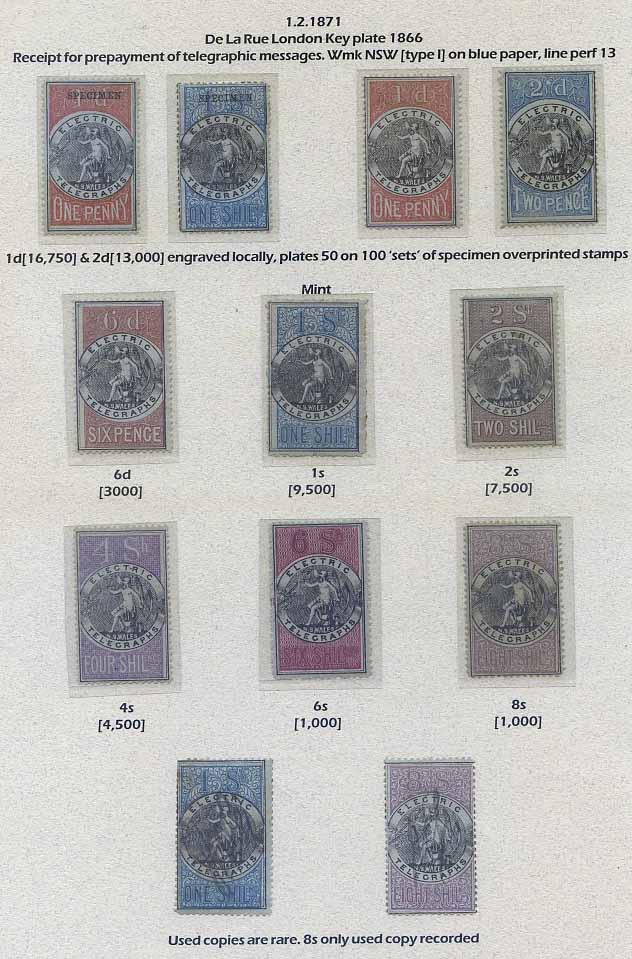
Since exhibiting the above page one other single used 8/- value has come onto the market
--
1885
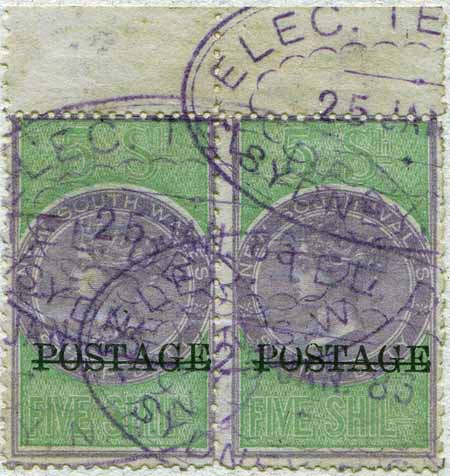
The above pair showing the need for a 10/- value
1885 [15 October] Wmk NSW Type I Blue Paper Perf11½x10
A 5/- Stamp Duty overprinted POSTAGE was supplied to the Superintendent of Telegraphs [16,400] even thou 10,000 10/- and 10,000 £1 duty stamps were also prepared and overprinted 'POSTAGE' for delivery to the Telegraph Dept. They were never sent to the dept and were used up by the Post Office. This system ran for 6 months only.

Varieties in overprint exist. Above line break between G E
--
1894 Stamped Telegram Forms
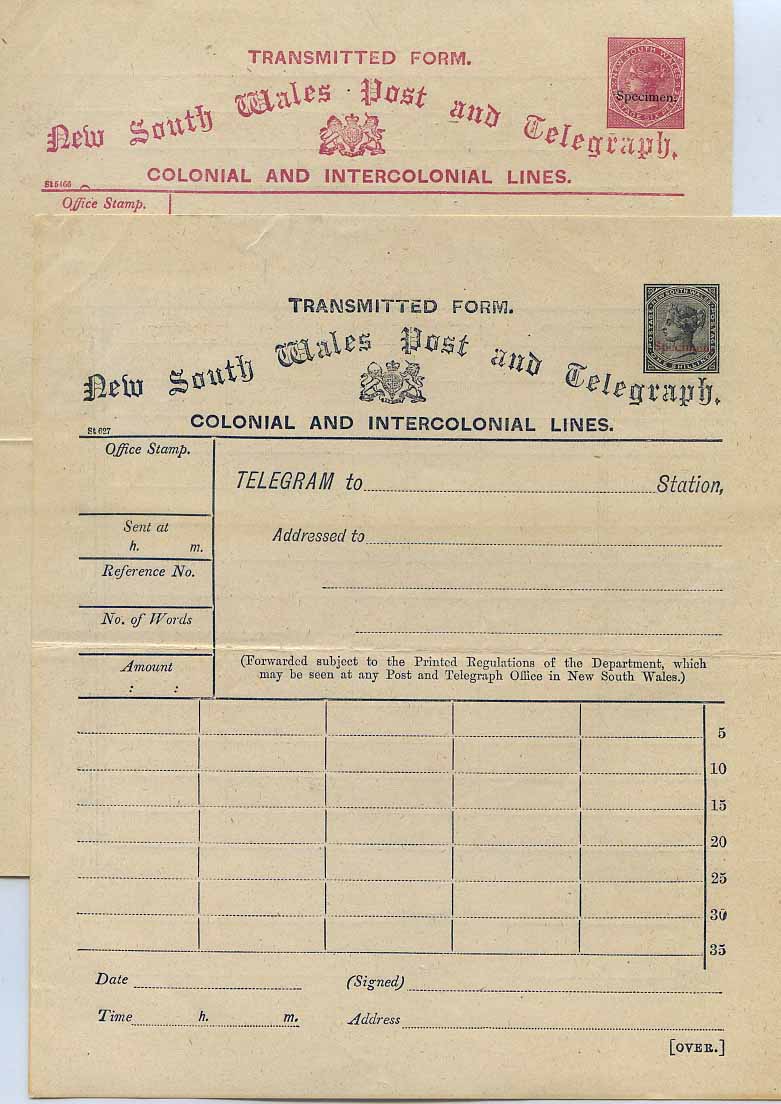
-----------------
Queensland
Various means of cancels can be found on both stamps and by themself on a telegram.
The following is the earliest circular handstamp recorded for any of the Australian States.
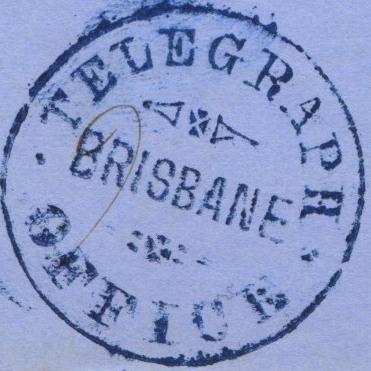
--
The following 5 are the earliest of the oval types recorded.

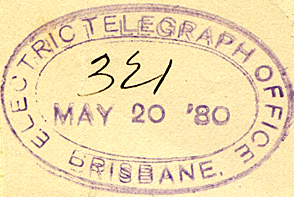
Type 1 Type 2

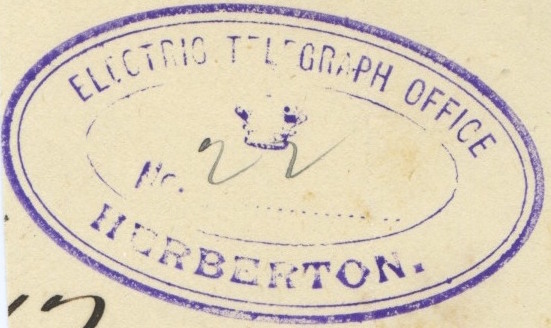
Type 3 Type 4
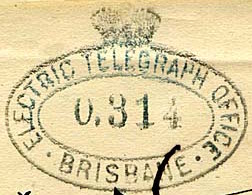
Type 5
--
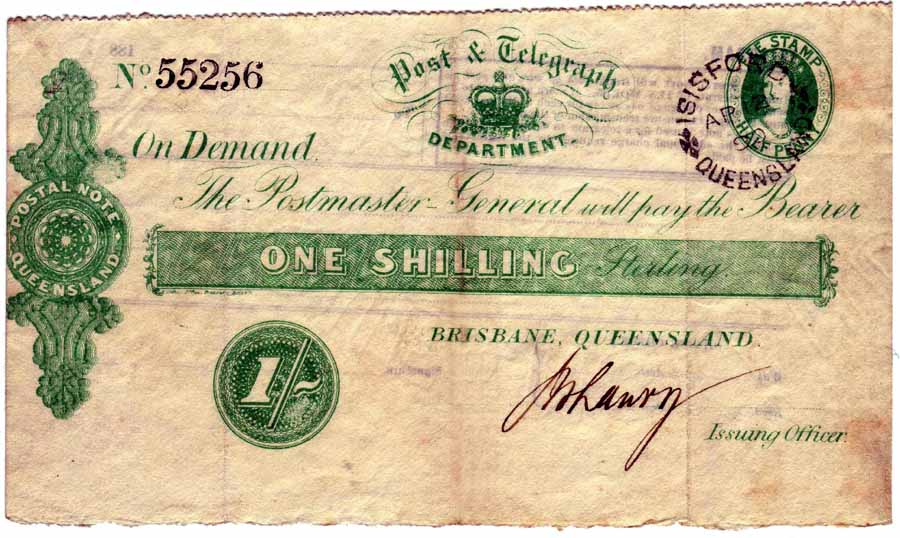
1880 Postal Note with Telegram on reverse
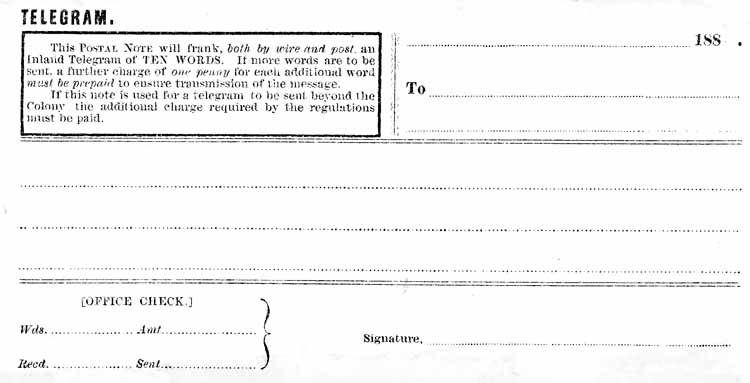
Telegram pre-printed on the reverse of the 1/- Postal Note of 1880
--
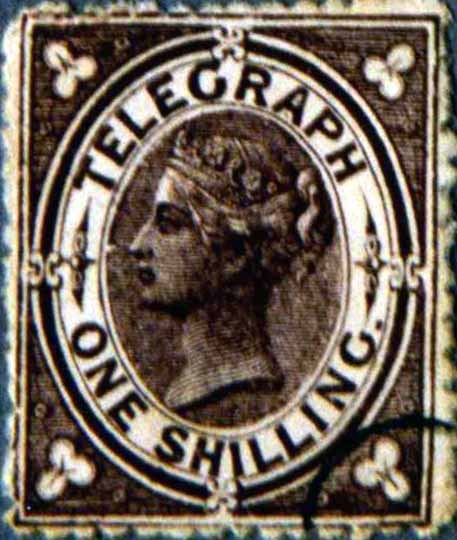
CTO Presentation Copy Perf 12

This above notation could explain why there are postage stamps with Telegraph Cancels on

1882 Stamped Electric Telegraph Form
-----------------
Victoria
Embossed
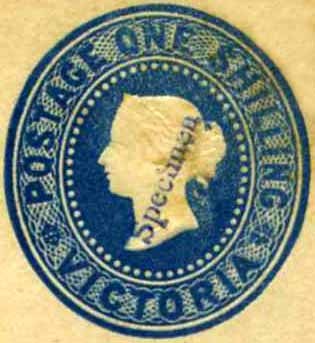
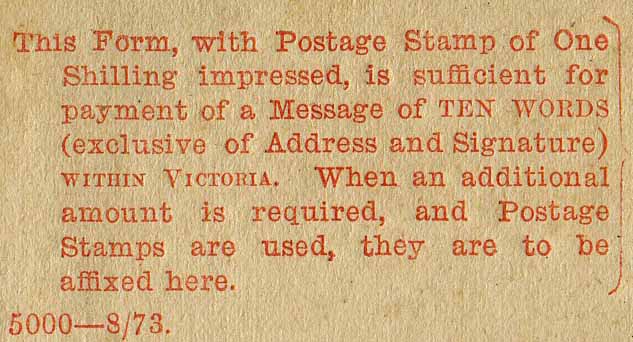
This above notation could explain why there are postage stamps with Telegraph Cancels on
1873 Stamped Telegraph Form
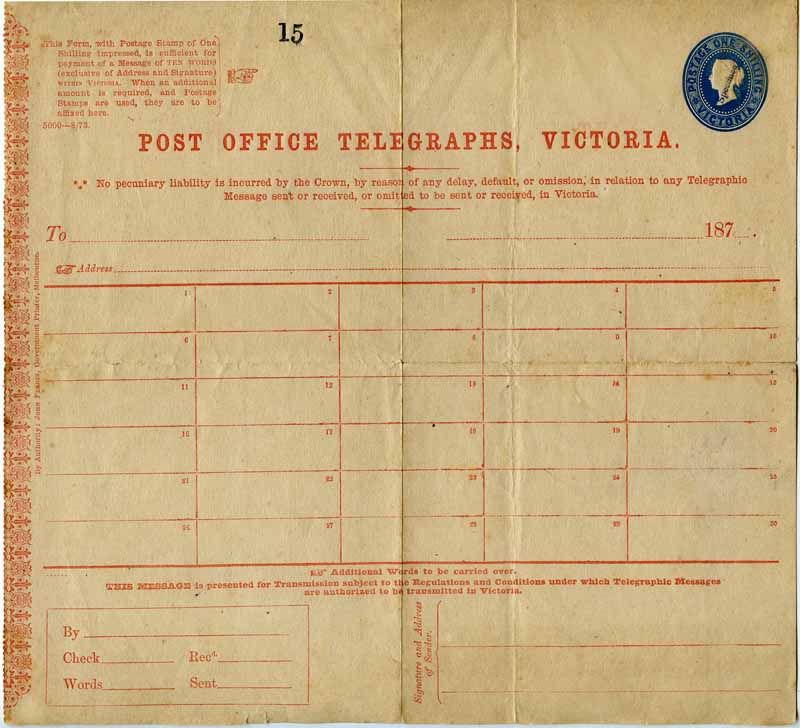

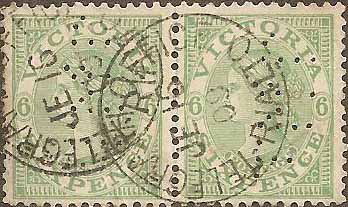
--
Victoria Telephone Stamp
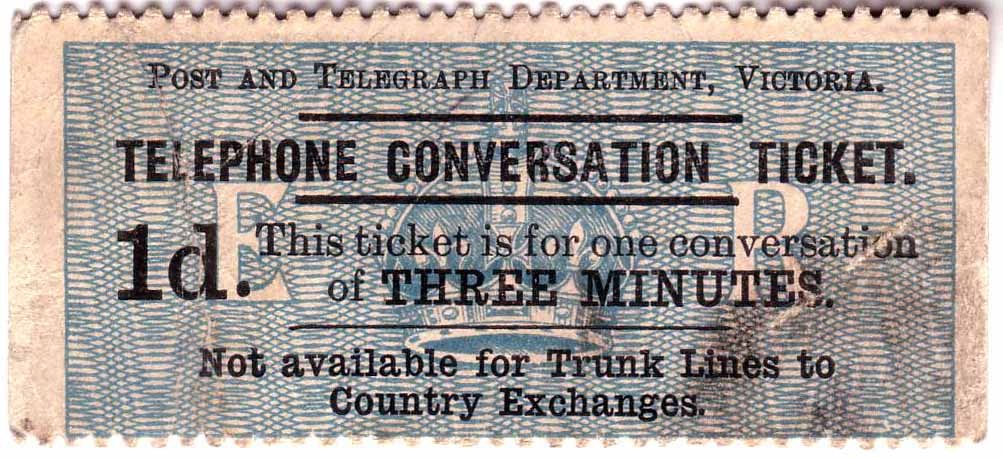
-----------------
Western Australia
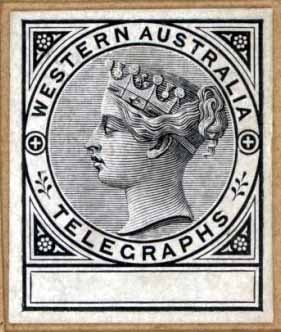
Master Die Proof
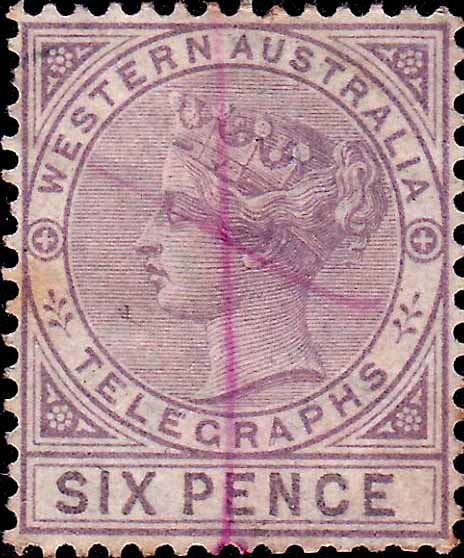
Possible Telegraph use

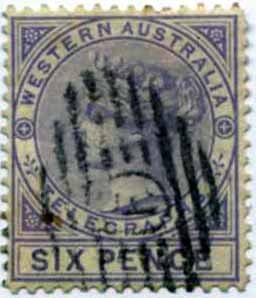

1st printing 1d & 6d perf 14 2nd printing [1d only] perf 12½
1879 Watermark Crown/CC Perf 14, 12½.
1d, 1d[perf 12½], 6d.
Die Proof
Adhesives on complete Electric Telegraph form 1d & 6d are rare. Postal use was permitted and appears to be the prominent survivor
--
Embossed
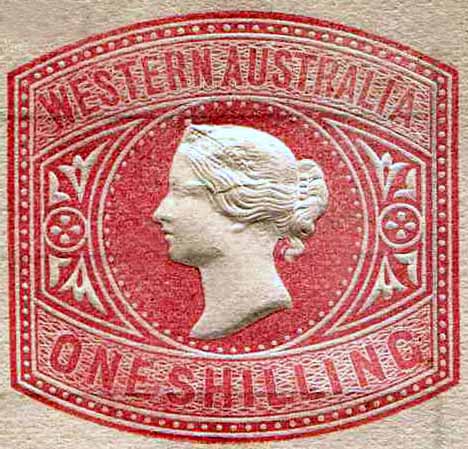
1879 Embossed Stamped Electric Telegraph Form
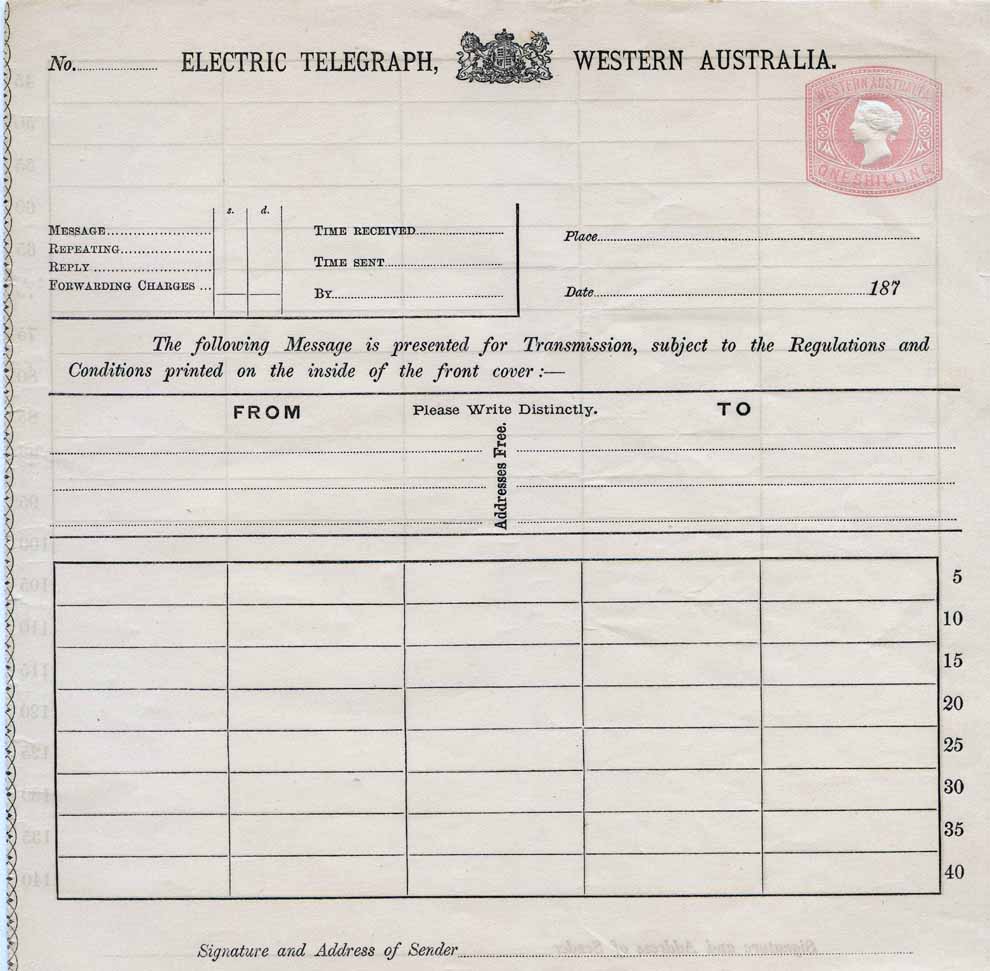
-----------------
South Australia
Nil Stamp Use
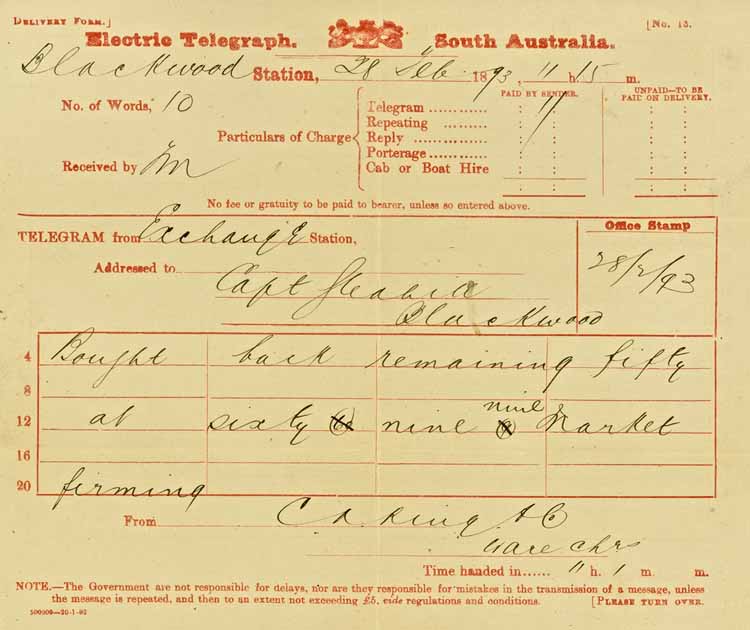
Telephone Stamp
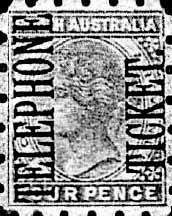
Photocopy
c1904. Printed brown on card perf 5½. Black overprint.
-----------------
Tasmania
Nil Stamp Use
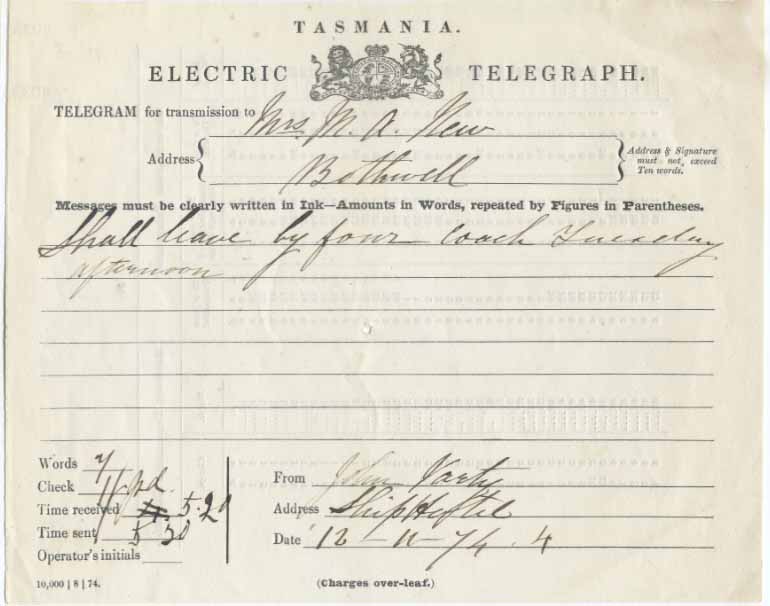
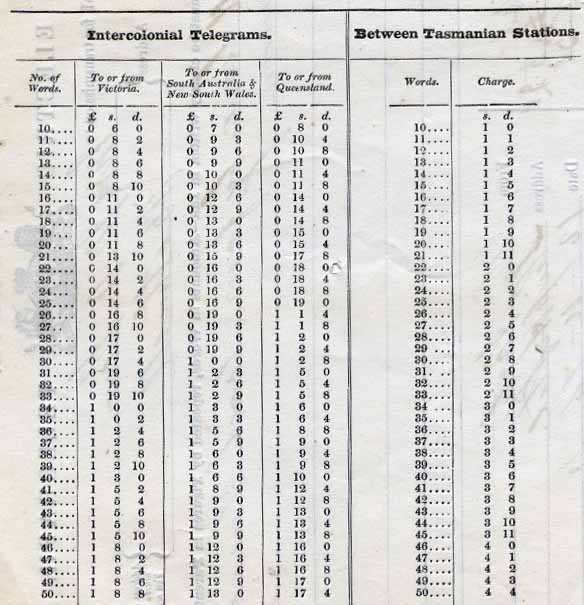
Rear of above
-----------------
Australia from 1916
The below study by Brian Fuller, David Coath & Dave Elsmore
1st Wmk

Queensland 7-8mm
--
2nd Wmk
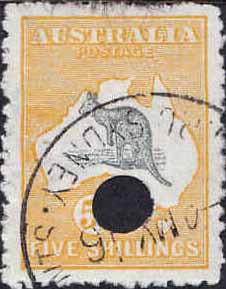

--
3rd Wmk
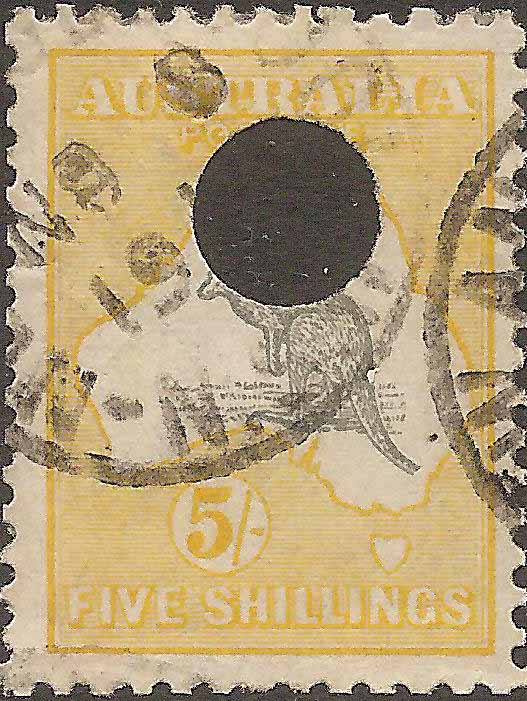
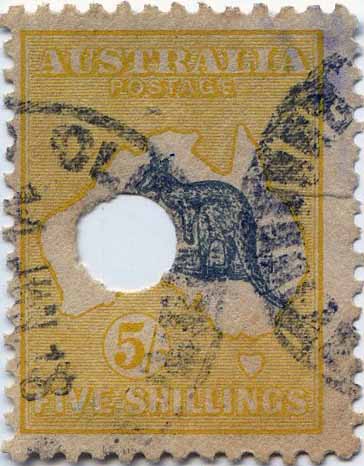
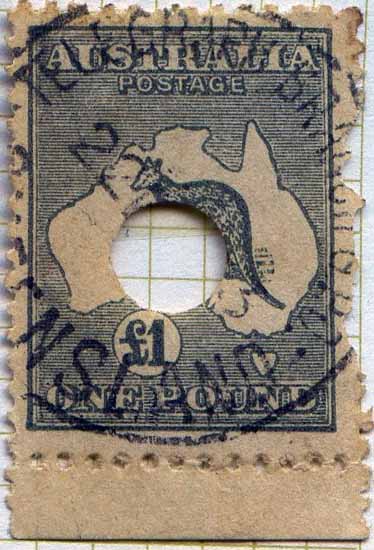


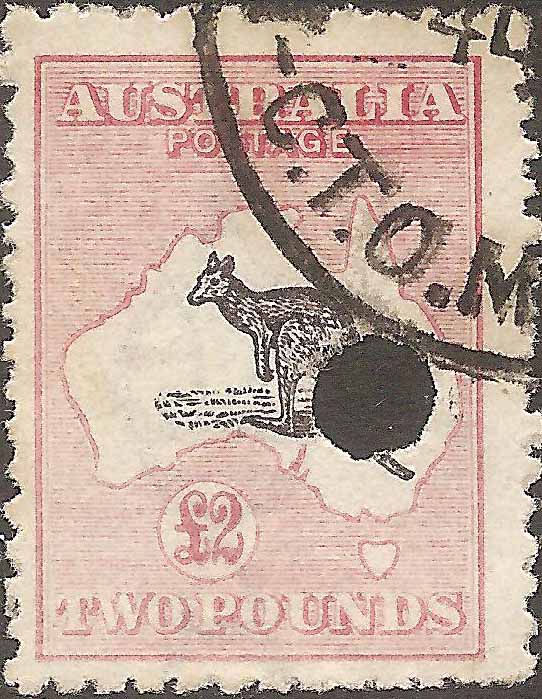
--
Small Multi Wmk
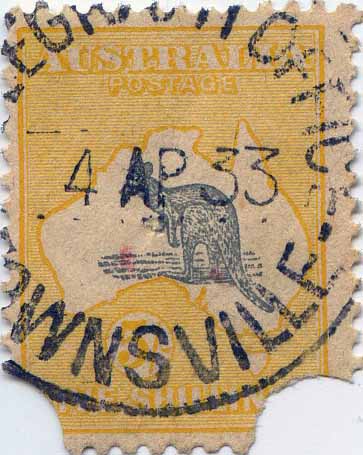
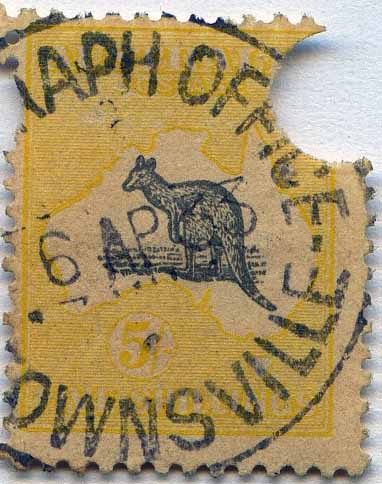
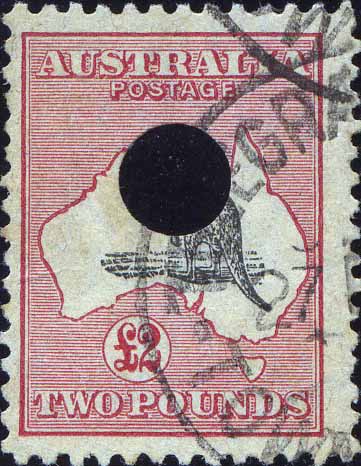
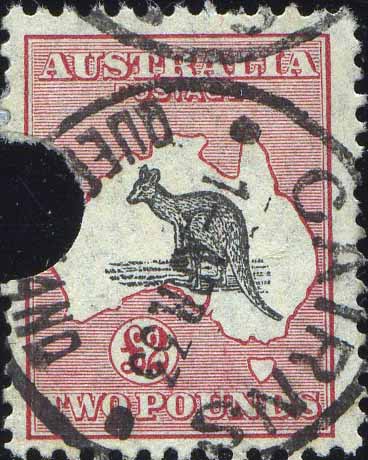
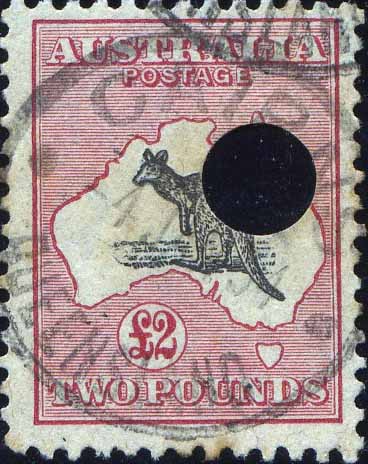
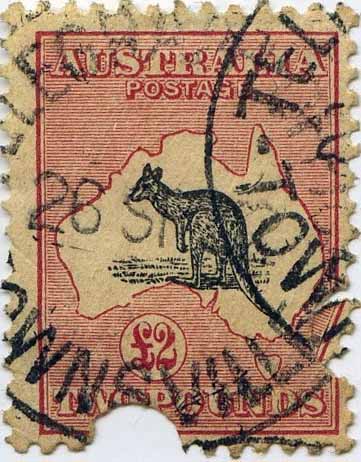
--
C of A Wmk

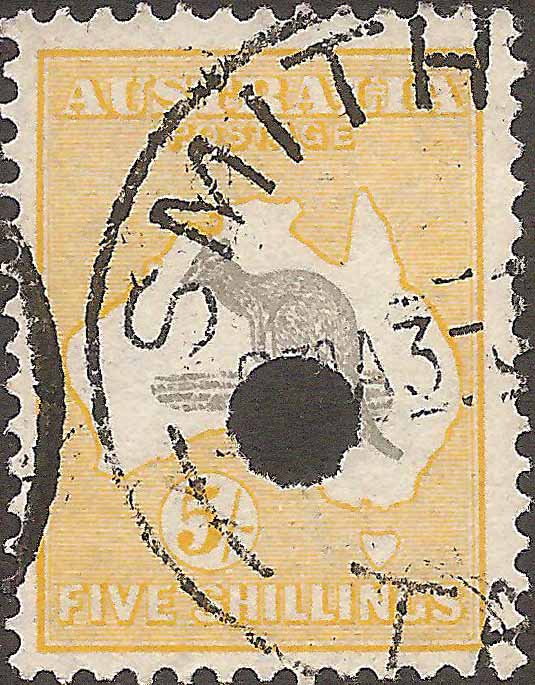
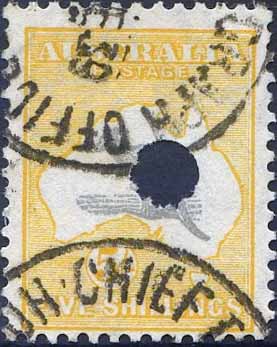
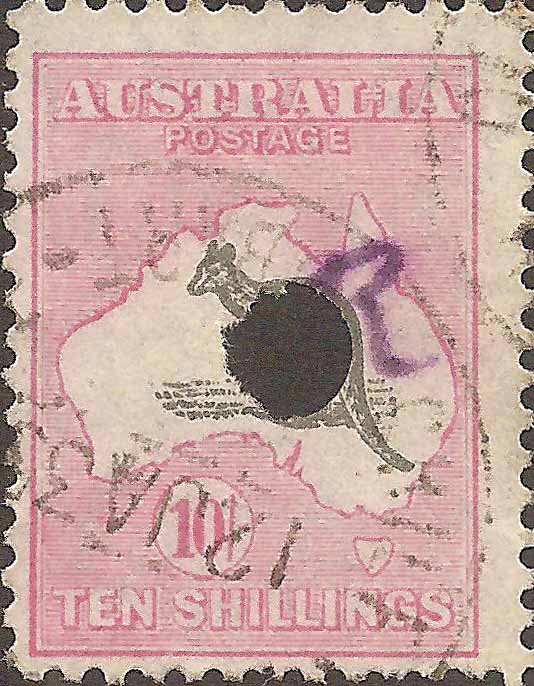
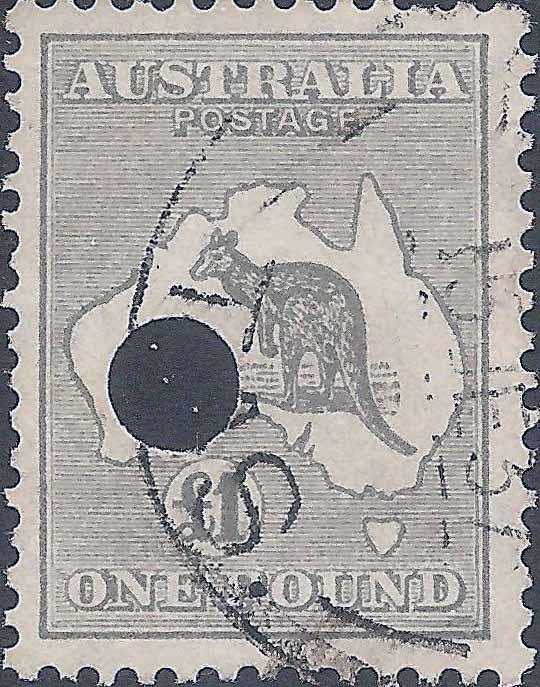

Tasmania 7-8mm
------------------
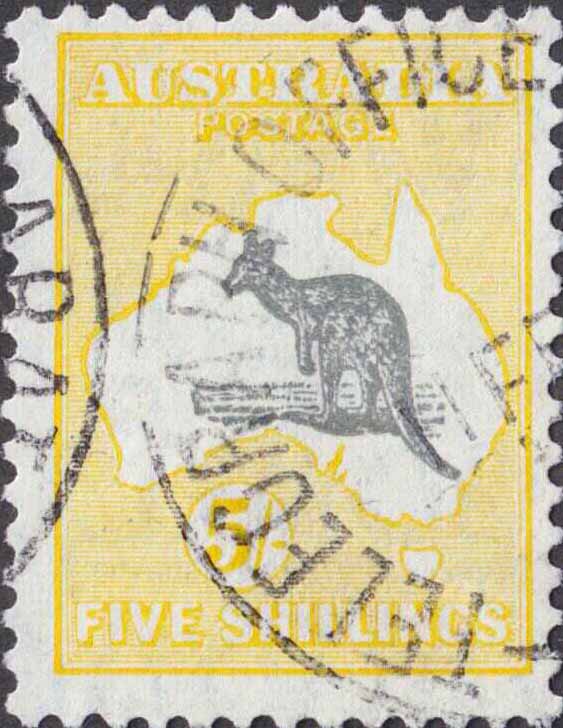
Telegraph Office Cancel. This copy escaping the punch hole
------------------
Commonwealth Telephone Stamps from 1916
1st Wmk

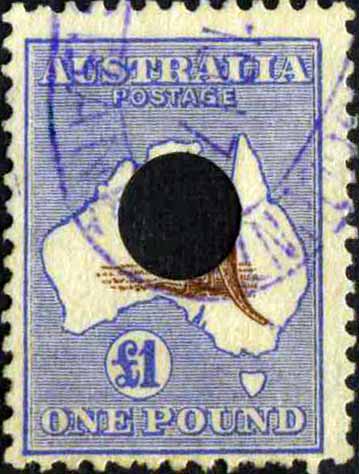
Queensland 7-8mm
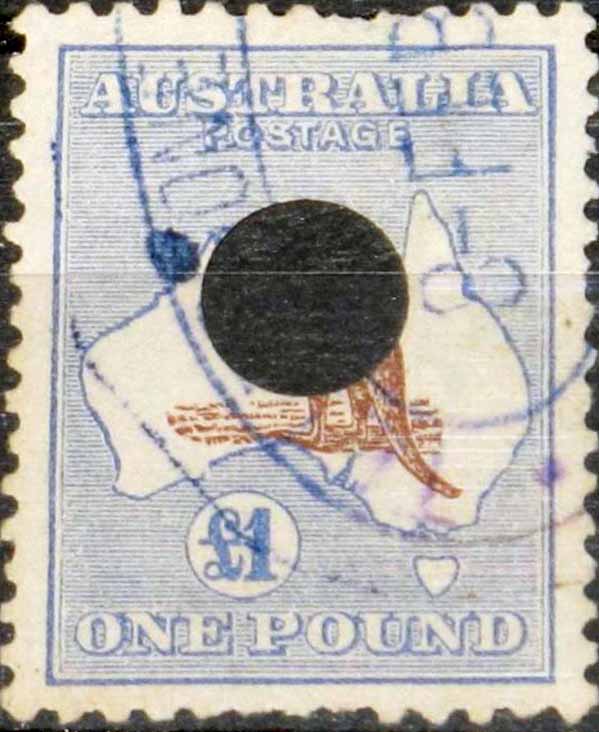
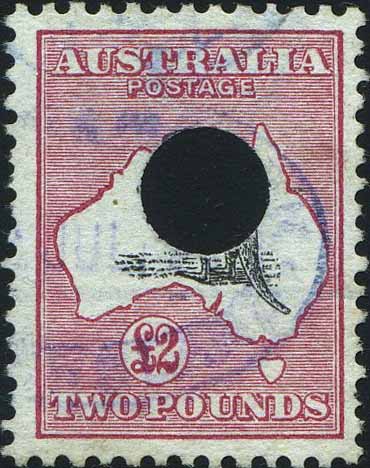
--
2nd Wmk

--
3rd Wmk
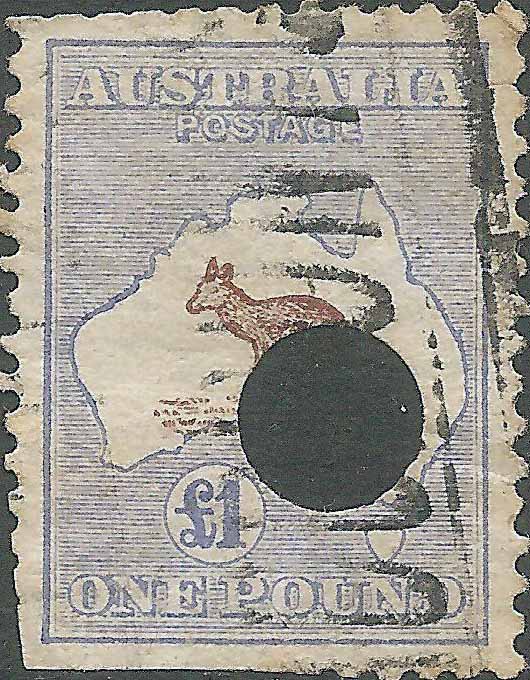
--
Small Multi Wmk
Nil
--
C of A Wmk
Nil
--
Below are unknown watermarks
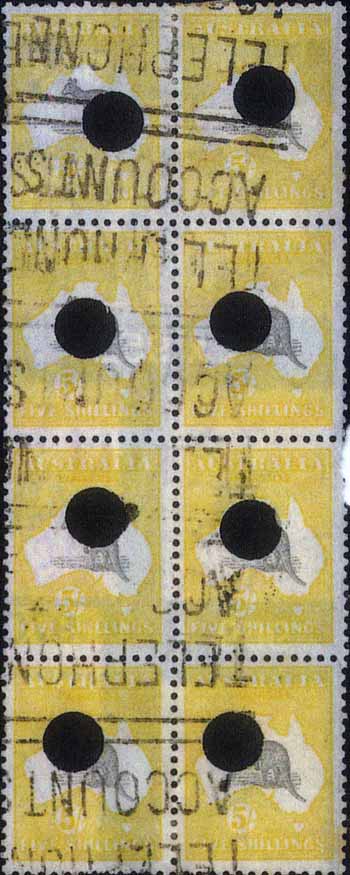
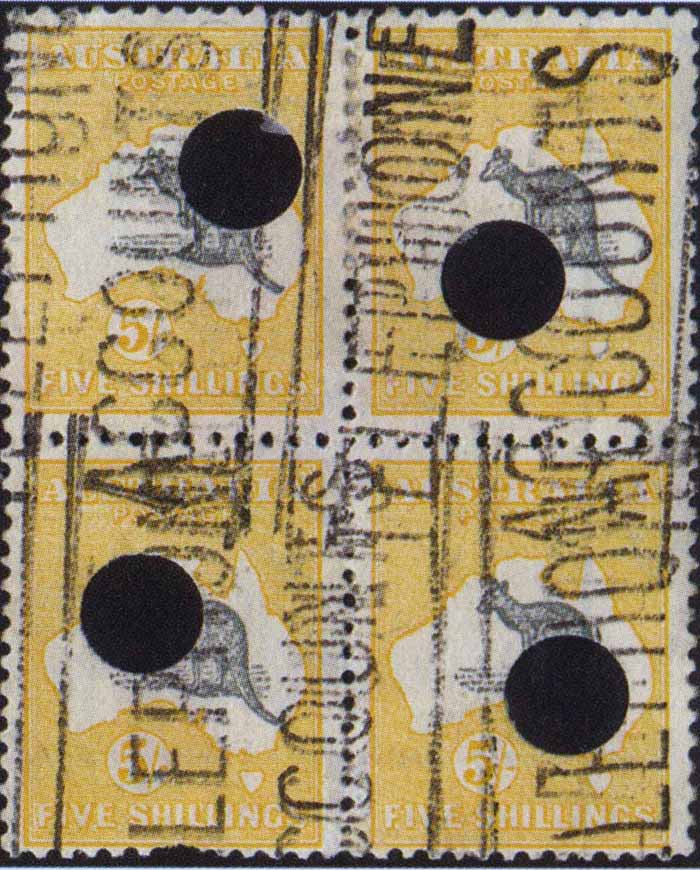
END Telephone Account
--
Unknown
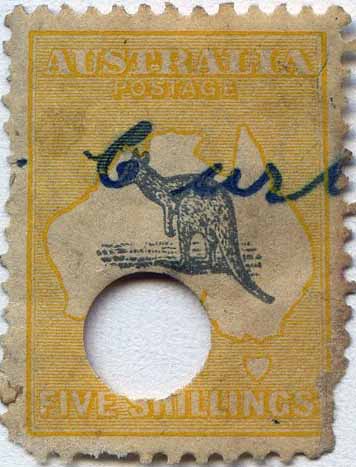
Telegraph or Telephone use
-------------------------
Others:

--

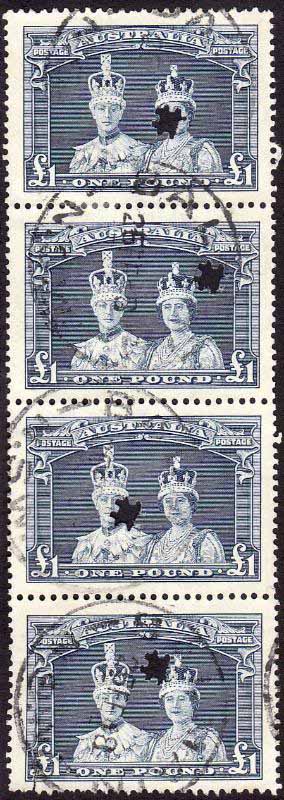
--

--

--

--

Postal use with Telegraph Office cancel
------------------------------------------------
TELEGRAPH AND OTHER PUNCTURES
(John Grant)
I recently came across a Bulk Postage Docket (shown below) and purchased the item partly because of its connection with Perfins and partly out of general curiosity. I was interested to know why the higher value stamps had been punctured to remove a rather large portion of the stamp paper - evidently after the stamps had served their purpose.
After searching unsuccessfully for an answer, I found that my question was more or less answered by an article, which I had written (and forgotten about) for a different journal in relation to Telegraph Punctures. The following paragraphs originally appeared in Capital Philately (Vol 9, No 2, February 1990)(SEE BELOW GRAPHICS FOR ORIGINAL ARTICLE) and are reproduced with the permission of the Editor of that journal.
In October 1903, a stamp dealer who operated the Victorian Stamp Market in Flinders Lane, Melbourne, notified the Postmaster-General's Department of a possible irregularity in relation to traffic in used postage stamps. Two stamps of £1 and £2 value had been offered to the dealer by a young customer. the dealer, on noticing that the stamps bore the impress of the GPO obliterating stamp, detained the customer and contacted the Department.
The subsequent investigation carried out by the Department established that the stamps had been removed from bulk postage dockets. As far as the head office of the Department was concerned, the proper procedures required that all dockets with obliterated stamps (these included bulk postage dockets, telegrams and vouchers used for collect-on-delivery telegrams) were to be forwarded to the Accounts Branch to be checked before being put into safekeeping. The accumulated dockets were then to be destroyed at certain intervals. Obviously, these procedures had not been observed in relation to the two stamps offered to the dealer.
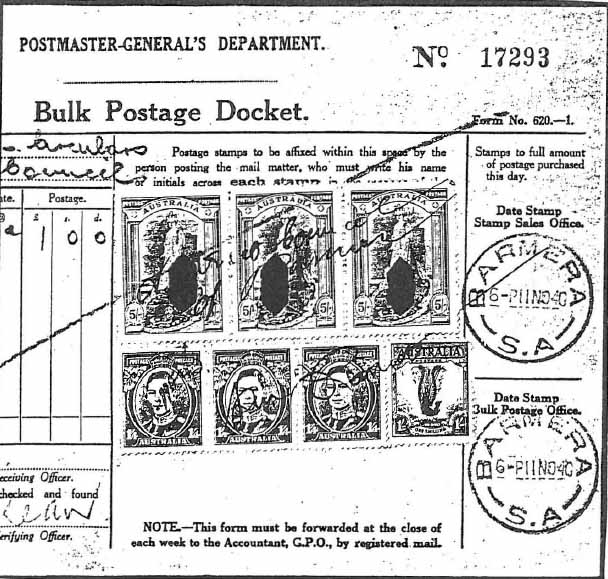
Following completion of the investigation, in August 1905, a memorandum referring to telegraphic documents was sent from the Department's head office to all State Deputy Postmasters-General. The memorandum noted that although such stamps had served their original purpose in connection with the collection of revenue, the matter was serious in that:
1. The stamps are the property of the PMG and the taking of them is larceny, more particularly as they have a sale value and are therefore valuable property;
2. as postage stamps, whether intact or defaced, are not sold by the Department below their face value officers cannot under such circumstances be allowed to steal the property of the PMG for the purpose of under-selling him; and
a. to sell any stamp for less than its value is a fraud upon the revenue.
The State Deputy Postmasters-General were therefore instructed that:
3. Only authorised officers are allowed access to the documents having stamps attached;
a. Immediate action be taken to have all such stamps perforated, before they are put away, in such a manner as to absolutely destroy their saleable character; and
b. all stamped documents be ultimately destroyed in the presence of at least two officers.
The Victorian office of the Department responded later that month, noting that, with regard to the stamps on telegrams, the higher values (5/-, £1 and £2) have been punctured in addition to the messages themselves, the latter being dealt with by a machine to prevent the possibility of their being resubmitted. The inference in this response was that such stamps were already being punctured prior to the August instruction. Obsequiously, the Victorian response continued:
"In order to comply with the instruction that all stamps must be punctured, a supervision of the Search Officer for the purpose, and with punch and mallet was kept fully occupied for two days in puncturing one day's messages."
The Victorian Office wondered if perhaps it was strictly necessary to puncture stamps of the smaller denominations.
A similar suggestion was received from the NSW office which explained that over 8,000 messages were received daily and that it had been found that the one available officer, with the present machines could not perforate more than 2,500 messages per day, as care had to be exercised not to destroy the text of telegrams. That office also noted that all stamps fixed to telegrams, and having a value of 2/6, had been punctured since the introduction of the system of prepaying, in stamps, the costs of transmitting telegrams to destinations beyond the Commonwealth.
The NSW office also noted that most stamps on telegrams were of 6d, 9d and 1/- values, for which present philatelic values were 9d per hundred, 1/- per dozen and 3d per dozen respectively. That office suggested that these values offered little inducement for illicit traffic.
Bowing to the wisdom of these representations, but insistent on having its own way at Postmasters-General in October 1905 that the earlier August instruction was henceforth to apply only to stamps of the value of 2/- or over.
Apart from its humour the correspondence is interesting. First, it fleshes out the history of telegraph punctures and shows that they were very much a consequence of demands made by philately. More importantly, the records highlight that different States used different practices, well beyond federation and illustrate the difficulty of introducing uniform rules, which were to apply to the previously separate and autonomous postal administrations.
Reprinted from #29 South Pacific Perfin Bulletin October 1994 by kind permission of PCNZA
---------------------------------------
Using the Australian Archives As A Philatelic Resource Telegraph Punctures
Reprinted from Capital Philately (Vol 99 #2 February 1990)
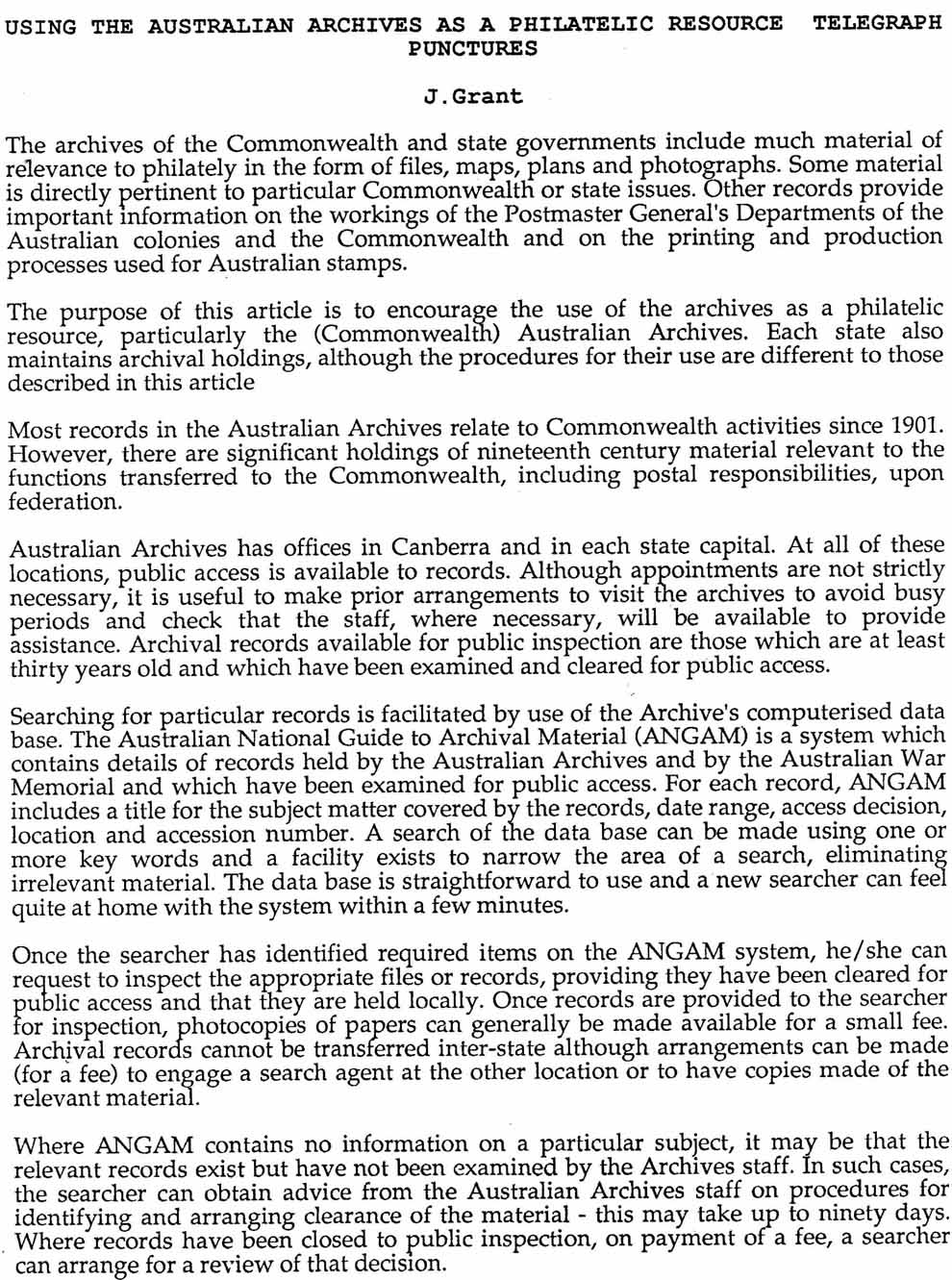
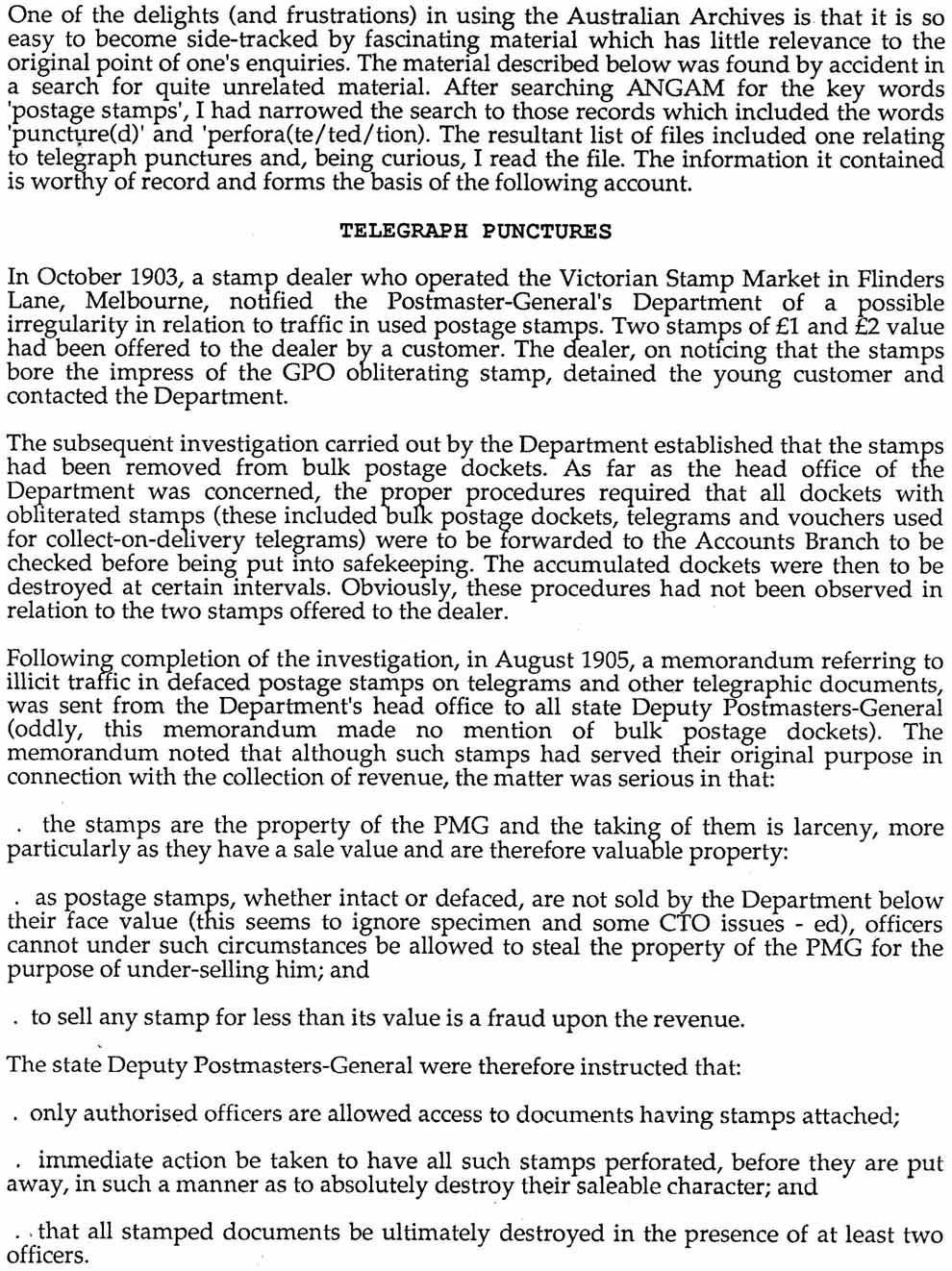
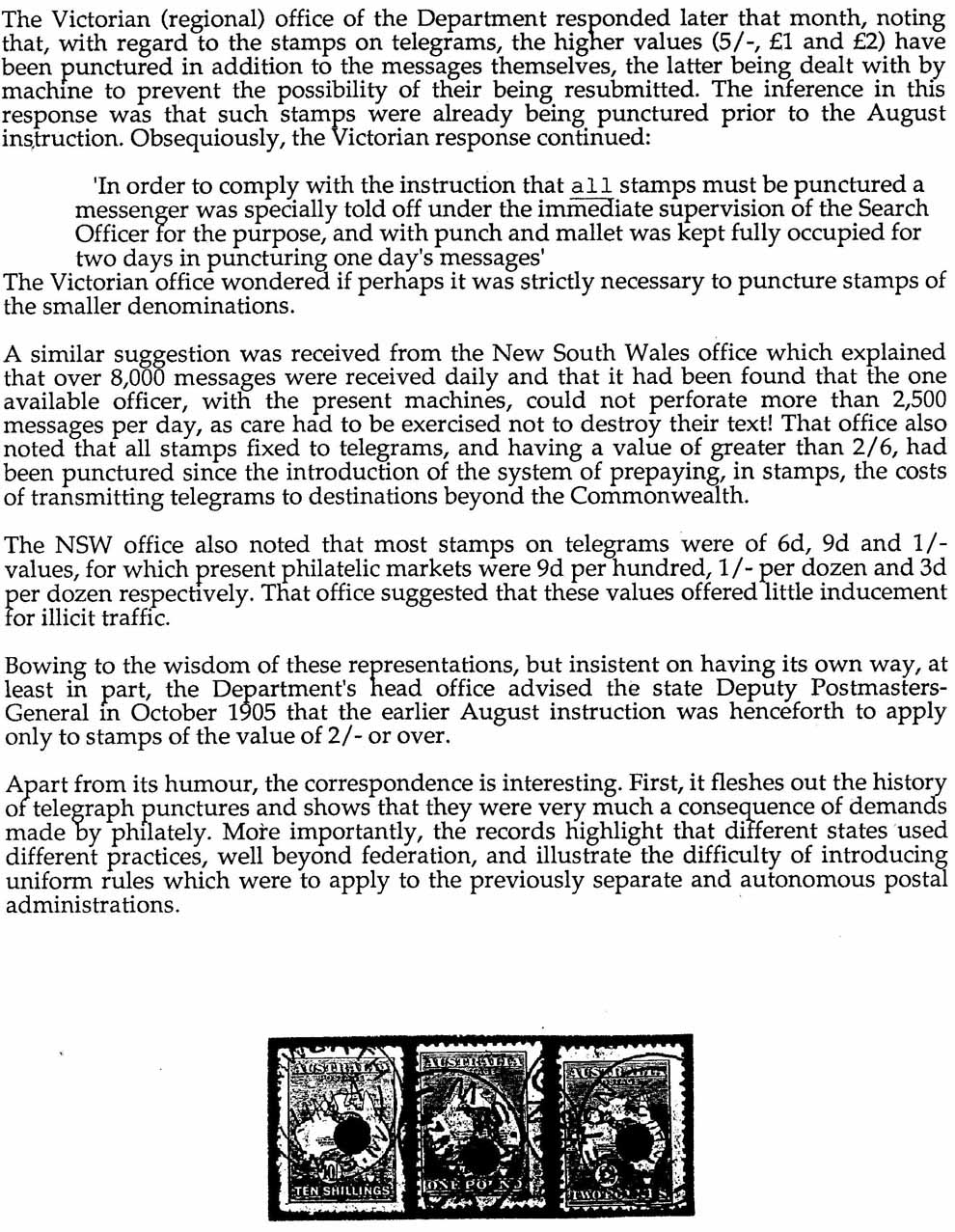
----------------------------------------------
Further Reading:
The Postage Stamps, Envelopes, Wrappers, Post Cards and Telegraph Stamps of New South Wales - 1911 A.F. Basset Hull
The Postage Stamps, Envelopes, Wrappers, Post Cards and Telegraph Forms of Queensland - 1930 A.F. Basset Hull
Western Australia The Stamps and Postal History - 1979 Western Australia Study Group
Telegraph & Telephone Stamps of the World - 1982 S. Hiscocks
The Stamps of Victoria - 1990 G. Kellow
Australian Telegram Forms & Envelopes - 1991 B. Hancock
New South Wales Revenue Stamps - 1999 R. Peck & D. Smith
Telegraph Stamps of the World - 2013 - Barefoot [This is an S. Hiscocks update]
---------------------------------------
Contributors:
David Coath - Victoria
Brian Fuller - Victoria
Jeff Turnbull - UK
Francis Kiddle RDP FRPSL - UK
Mark Gibson - South Australia
Dave Elsmore - Queensland
---------------------------------------
LINKS
Telegraph stamps of Great Britain
---------------------------------------
© copyright
All Graphics. Dave Elsmore
No part of this page may be copied used, saved in electronic form or hard printed.